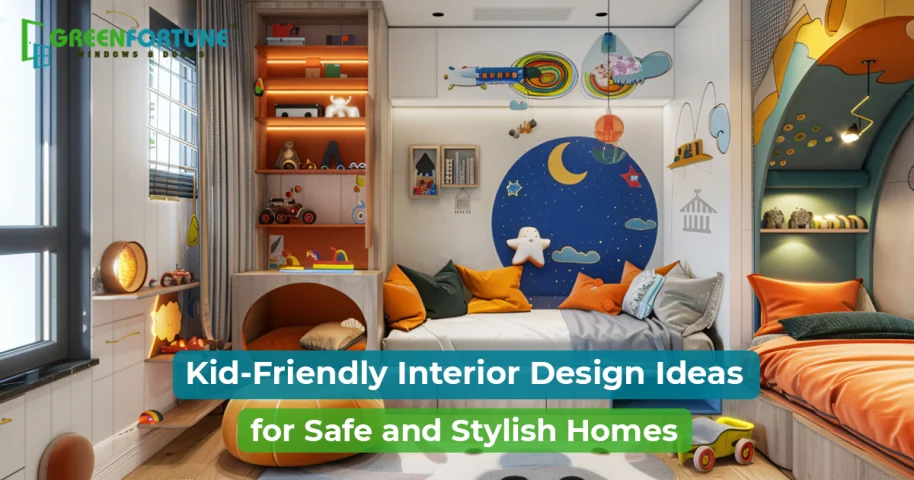
Dining Room Wash Basin Area Design Ideas to Match Style with Everyday Use
June 19, 2025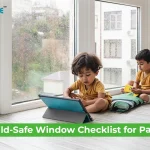
Child-Safe Windows: 11 features Every Parent Should Know
June 20, 2025Have you ever visited any home with Kid Friendly Interior Design? Or ever wondered how to create a room your child loves today and still enjoys after many years? Creating a space for your little one is not only about bright colors, cartoon stickers, and cute furniture, but it is about building a space that is safe, usable, and flexible. A kid's room should be perfect for playtime, grow with your child, and still look good in the process.
From toddler to teenager, your child’s needs change fast, and their room should be able to keep up. In this blog, we will explore why kid-friendly interior design matters, share easy and trendy design ideas, and help you create a room your child will love.
What is Kid Friendly Interior Design?
Kid friendly interior design refers to creating spaces that fit your child's needs, not just in how they look, but in their purpose. It is designing a room that’s safe, comfortable, and fun-filled, while still being practical for everyday life. It consists of soft corners, visually appealing, strong furniture, easy-to-clean surfaces, and lots of space to play and explore.
Also Read: Simple Boundary Wall Design Ideas for Modern Homes
A kid friendly interior design should also support your child’s growth and imagination. It is a room where they can read, learn, build, dream, and most importantly, be themselves. From choosing the right colors to adding storage for all their toys, every detail matters. With strategic ideas, you can implement child-friendly features with a modern, beautiful look that fits the rest of your home.
Why is Kid Friendly Interior Design Important?
A kid friendly interior design should guarantee a child has a protective, supportive, and inspiring environment. A major reason why it matters is safety. A kid friendly room has to be designed in such a way as to reduce risks like sharp edges, slippery floors, or unstable furniture.
The design encourages independence by giving kids easy access to toys, books, and clothes. It promotes creativity with fun and flexible spaces for play and imagination. It also supports your child’s growth by adapting to their changing needs over time. It improves organization with smart storage solutions for a tidy living. It also creates a sense of responsibility within your child and makes them more disciplined. It creates comfort that helps your child feel relaxed and emotionally secure. It helps in strengthening their routines by allotting areas for sleep, study, and play within the same room.
Also Read: 10 Simple Decorating Ideas for Front Room Makeover
Kid Friendly Interior Design Ideas
You have to plan your kid's room in such a way that it should evolve as your child grows, from baby to toddler, school-age, teen, and into young adulthood. An effective Kid friendly interior design mostly consists of a secure atmosphere, convertible furniture, low-maintenance fabrics and materials, plenty of storage space, etc. A few top kid friendly interior design ideas are given below.
Safety and Durability
It is important to choose furniture with strong, rounded edges made from sturdy materials like wood or rattan to keep little ones safe and withstand rough play. Mostly avoid glass and sharp items that could cause injury. As your child grows, maintain key safety features such as secured cabinets and non-slip rugs while gradually adding more structured storage and stylish decor.
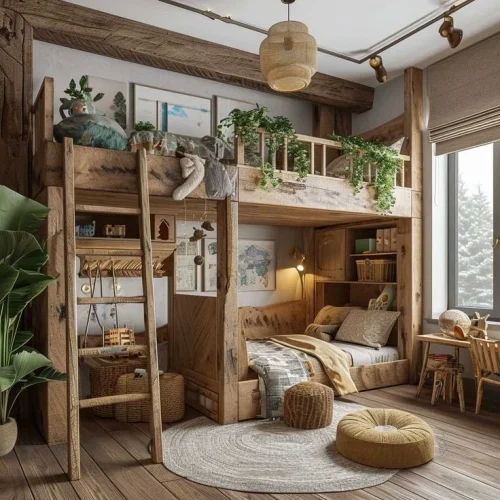
Convertible Furniture
You can invest in pieces that grow with your child, like cribs that convert into toddler beds, changing tables that become dressers, and modular storage units. It is helpful for you to interchange their study desks, bookshelves, and adjustable seating as your child moves into school and the teen period. This flexibility helps in fewer replacements and a more adaptable room over time.
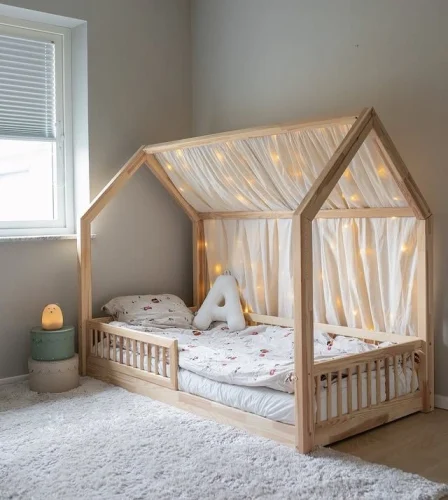
Washable Fabrics and Easy-to-Clean Surfaces
Toddlers tend to be messy, so opt for machine-washable bedding, curtains, and upholstery. Pick the best fabrics that help in resisting stains and fading. For walls, choose washable paints or removable wallpaper that handles spills and scribbles. Consider chalkboard paint or creative wall sections that can transform with your child’s artistic interests. As they mature, update fabrics and decor easily based on their style.
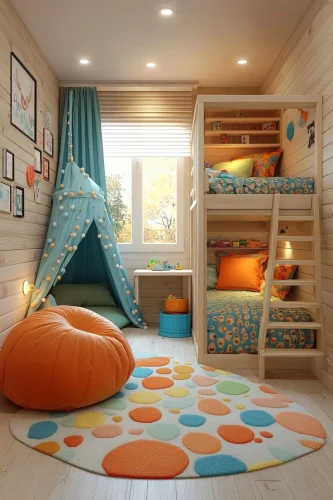
Also Read: Retro Interior Aesthetic: How to Blend Vintage Luxury with Modern Interiors
Neutral Walls and Decor
Neutral wall colors and classic furniture styles create an everlasting look that grows with your child. Start with playful stickers, colorful rugs, or themed bedding during toddler years. Later, replace these with framed art, posters, or bolder colors according to your child’s requirement without major repainting or redesign.
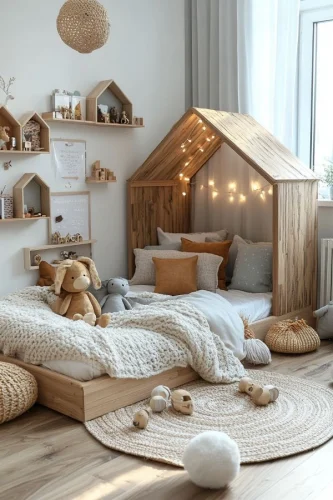
Utility Zones
It is essential to create spaces customized to your child’s development. You have to provide open, safe spaces for babies and toddlers to crawl and play, with soft rugs and accessible toy storage. If your child is school-going, then add a study desk and a reading corner. If they turned to adults, then transform these into organized workspaces or hobby corners.
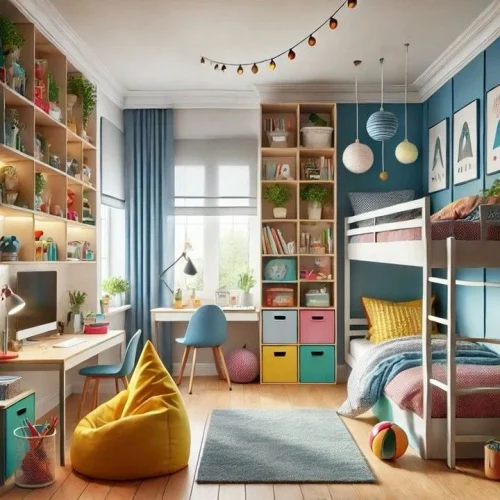
Smart Storage Solutions
Incorporating labeled bins and low shelves can be helpful for your child to access their toys and learn to keep them tidy. As your child grows, slowly transform the toy bins into bookcases, hobby organizers, or items to store their gadgets. Multi-functional furniture with built-in storage saves space and helps keep the room neat for a long period.
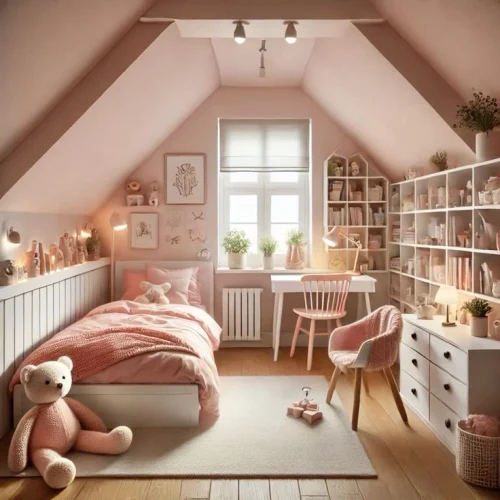
Also Read: Athangudi Tiles: Timeless Beauty, Craftsmanship & All You Need to Know
Involve Your Child in Decorating
Your child also has a lot of creative items to decorate their room. You can engage them in decorating decisions from toddlerhood onward. Toddlers enjoy choosing colors or fun posters, whereas teens love to decorate their room with photos, memory walls, collections, or tech setups. This cultivates a sense of ownership and encourages independence and creativity.
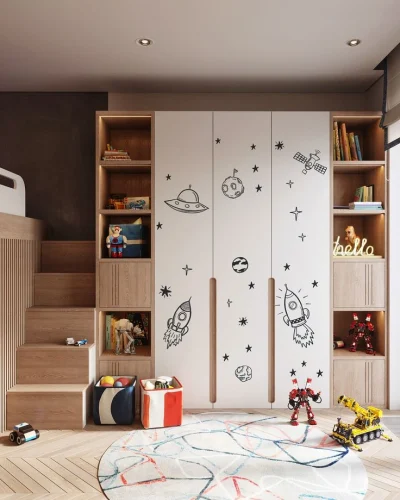
Long-Term Usage
You should avoid overly “babyish” furniture or decor that needs replacing. Choose classic styles and quality materials that last. A themed bed frame can easily be changed with new bedding or accessories as your child’s tastes change. You can save money with the durable and classic pieces. It can also make their room stylish even they grow.
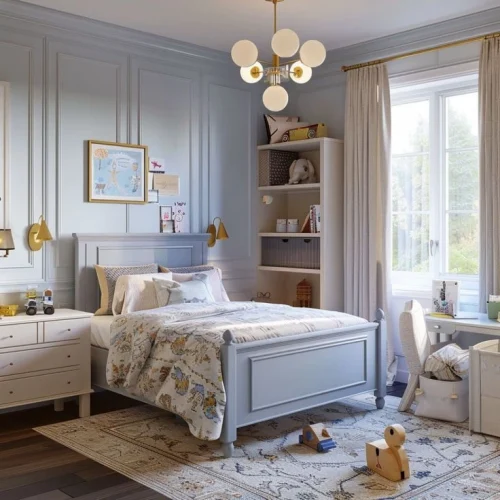
Lighting
Lighting plays a major role in setting up the interiors. Use soft, warm ambient lighting like ceiling lights or lamps to create a cozy environment. You can add lighting, such as adjustable desk lamps for studying, and fun night lights for toddlers. A dim light can make your child sleep peacefully without getting scared of the darkness. As your child grows, upgrade to reading lamps or decorative pendant lights based on their preferences.
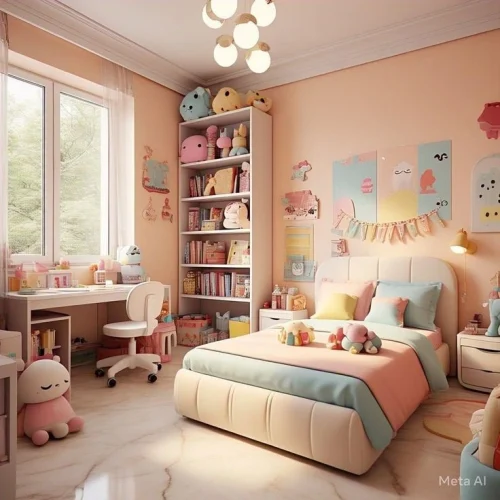
Final Thoughts
A kid-friendly room does not need to sacrifice style or constantly update your furniture. With a little planning and creativity, you can build a room that supports your child’s growth, interests, and everyday routines. If you think out of the box and focus on what truly works for your child, you can create a little world within your home. Start with smart choices and choose the right design that matches your budget and lifestyle.
GreenFortune: Smarter Spaces Start Here
At GreenFortune, we design uPVC windows and doors and create intelligent solutions that improve everyday living. Our uPVC systems are crafted to meet the needs of modern Indian homes, offering excellent thermal insulation, noise reduction, and long-lasting durability.
Choose GreenFortune for a home that’s stronger, quieter, and built for the future. Upgrade today, where comfort and innovation are just a step away.
FAQs
- What is the best age to start designing a kid-friendly room?
You can start designing a kid-friendly room as early as infancy. The key is to choose flexible furniture, soft materials, and neutral design elements that can easily adapt as your child grows.
- Which paint or wall finish is best for kid’s rooms?
Washable or scrubbable paints are best for kid’s rooms as they resist stains and are easy to clean. You can also consider removable wallpaper or chalkboard paint for creative expression.
- How often should I update the design of my child’s room?
There's no fixed timeline. Aim to make small updates every few years based on your child’s needs and preferences. A flexible foundation reduces the need for frequent, expensive changes.
- Can I keep my child’s room stylish and still stay within budget?
Yes, choose timeless furniture, use DIY decor, repurpose existing items, and add personality through affordable accessories. Careful planning helps balance function, budget, and creativity well.
- What flooring is best for children’s rooms?
Choose durable, non-slip, and easy-to-clean flooring like hardwood with rugs, vinyl, or cork. Avoid glossy tiles or thick carpets that stain easily and are harder to maintain.








